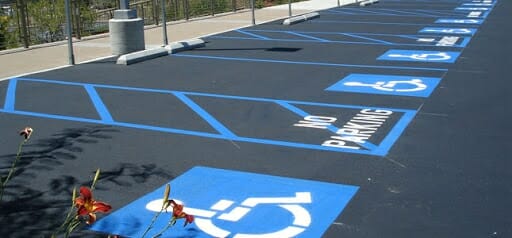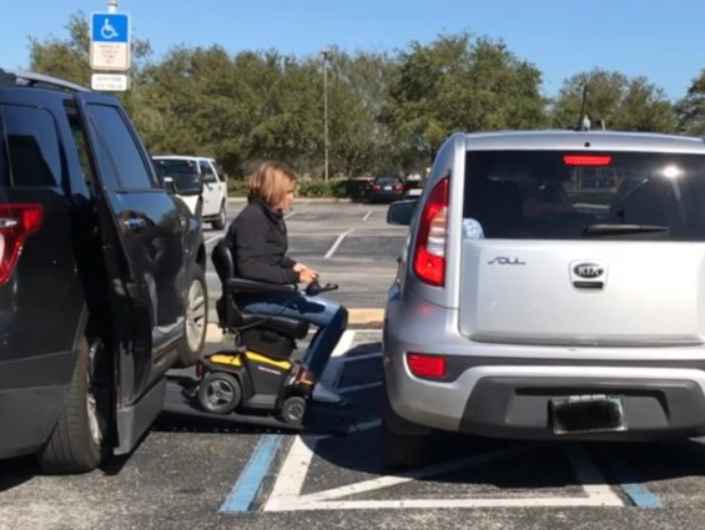
Now is the perfect time to clear up some of the most common misconceptions surrounding handicapped parking practices. Surveys have shown that 74% of people have witnessed an accessible parking space being misused. Therefore, everyone needs to understand some critical elements associated with handicapped parking. As you can imagine, many still do not understand the laws and regulations surrounding handicap-accessible parking. Here are some of the most common misconceptions explained!
Not all handicap-accessible parking spaces are the same. The areas with the striped lines directly next to a standard handicap-accessible parking spot are typically marked with an “Accessible Vans” sign. These spots are wider than the ordinary accessible parking spaces, often used by people with disabilities who are not driving wheelchair-accessible vehicles. The extra space allows for a wheelchair vehicle ramp to deploy from the van or SUV or for people that need extra space to access and transfer to their wheelchair.
It is a common misconception that all handicap-accessible parking spaces are for people who “physically need them” – i.e., appear to the naked eye to need the spaces. There are many “hidden disabilities” that many people do not realize merit in using handicap-accessible parking spaces. Even if there is no visible sign of a disability or need for a mobility device, it does not necessarily mean someone is misusing a parking space.
Building on the last point, the striped lines directly beside handicap-accessible parking spaces have a specific purpose and should not be parked within. Some people think it is better to park in these spots in a pinch rather than in a handicap-accessible space. In reality, utilizing either can cause accessibility issues for those with disabilities. Some may even believe these spaces are perfect for parking motorcycles, golf carts, or small vehicles. However, these should be left to those who genuinely need them.
These striped areas are no spaces at all. These areas provide the extra room individuals need in wheelchairs to safely enter and exit their vehicles. This area is necessary because the ramp deployed inside their vehicle extends approximately. 5 feet. Without this additional room, users would not have the space to navigate up or down their ramp. Therefore, when you park in or partially in these spaces, you take away the valuable room for someone to enter or exit their vehicle.
Oh, one last thing… In addition to causing convenience issues for people with disabilities, parking in these spots can have major consequences for the offenders. In most locations, obstructing & parking illegally in a handicapped zone carries a fine of at least $500 and jail time (source).

The above statement is both true and false. Indeed, disabled license plates cannot be transferred between vehicles, just like any other license plate. However, handicap placards that hang from the rearview mirror can be used in any vehicle the person who is issued the placard is currently riding. The person does not have to be driving the vehicle to use the placard to be legal.
That said, it is prohibited to let other individuals use a placard not issued to them. Placards are allotted to a single person, and misuse can have major consequences. Stiffer penalties are now being imposed across the country, and many states are taking a closer look at monitoring methods for proper use to ensure accessibility to all.
Superior Van & Mobility is a proud member of the National Mobility Equipment Dealer Association (NMEDA). We are also accredited by NMEDA and a Quality Assurance Program (QAP) participant. QAP is a recognition reserved for only the highest-rated mobility dealers with the BEST customer experience in the Nation. To learn more about Superior Van & Mobility or our adaptive solutions for cars, trucks, vans, and SUVs, please visit SuperiorVan.com today.

Richard Maxwell, is a seasoned automotive marketing executive with over two decades of experience. Starting in 1999 with his advertising agency, Maxx Design & Marketing, he has consistently delivered innovative marketing solutions. After earning his MBA, Richard shifted focus to adaptive technology, serving as Marketing Manager for Superior Van & Mobility. Today, he leverages his expertise to promote and educate others about adaptive equipment in transportation and drive change in accessible mobility.